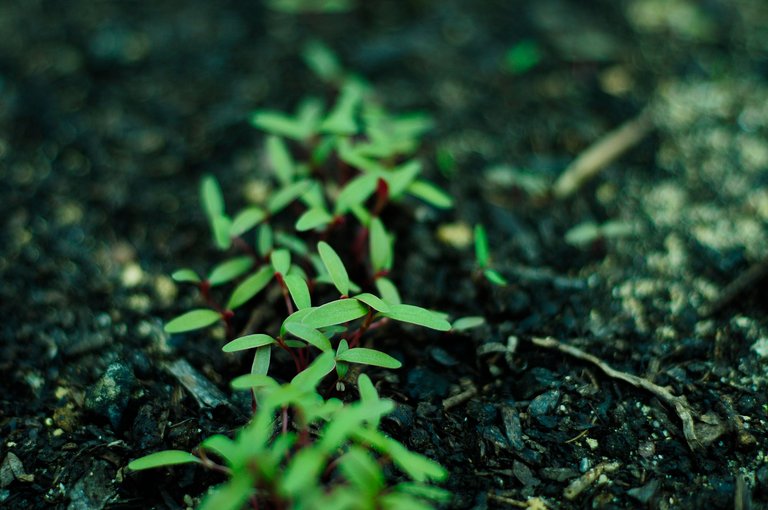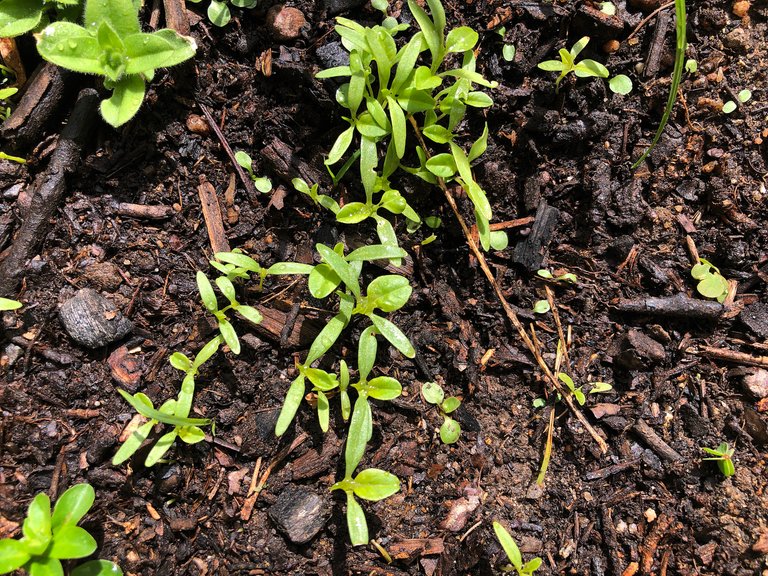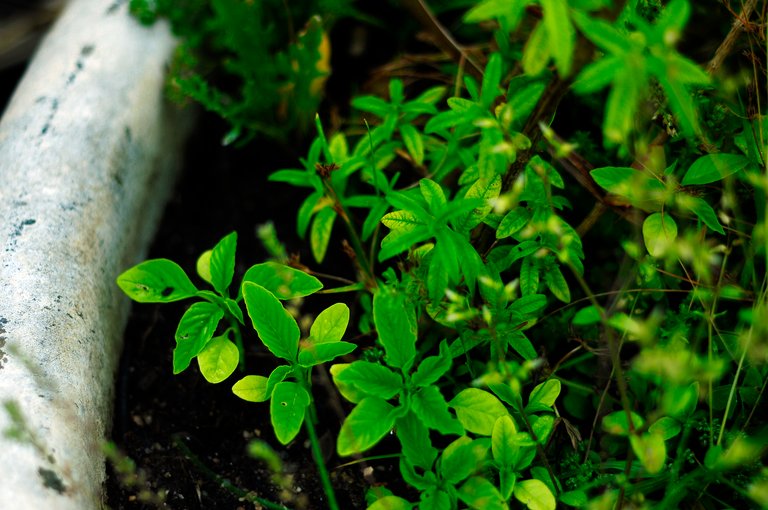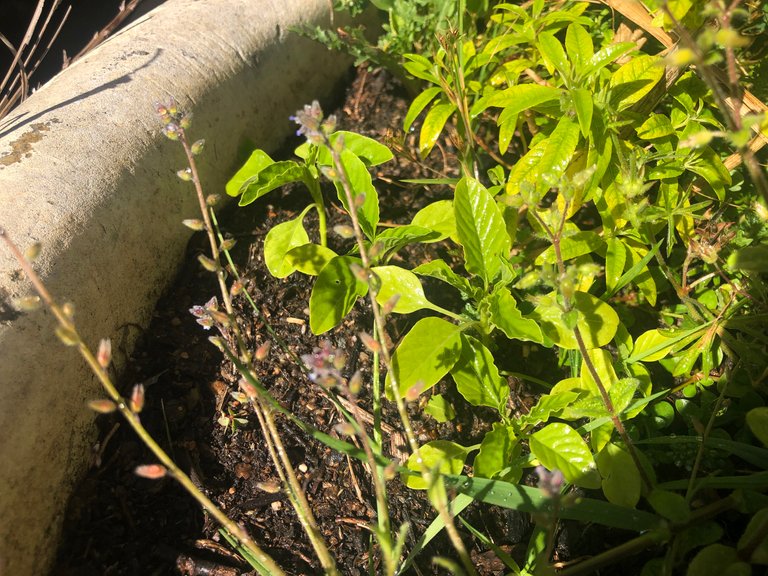Doing research about different plants and herbs are tough because sometimes the names differ slightly, or the Latin name gets changed, or taxonomist differs about what genus or family a plant belongs to. One example of such a plant that is difficult to study or research is what we South Africans call African Spinach or Morogo. That is a bit of an overestimate because most South Africans regard these plants as weeds. Yes, plants. In fact, there are 14 different plants that are commonly referred to as morogo or African spinach. And people who normally eat these plants are generally starting to lose the battle against weeds. I have talked to so many people who I thought would know about morogo but few actually know about these plants. It is said that only a select few know how to identify them because it can be mistaken for other plants. Also, there is also this idea that morogo, an ingredient in the dish umfino, is commonly harvested by women and that the dish is made for women.

Either way, in the following post, I will share with you my own journey with growing morogo and amaranth, which is sometimes labeled as the same and sometimes not. After all my research and about 3 years of growing it, I am still not sure what morogo is, or why there are these misconceptions. One major reason is that language is generally messy, and translations are never really good. I will also share with you how to make umfino, a traditional South African dish, and how these herbs can be used as replacements for spinach. Not only are the leaves of these plants tastier, but I also think they are nutritionally denser as well.
What Even is Morogo or Marog or Marogo or African Spinach?
Morogo is the Sesotho and Tswana word that refers to “leafy green vegetables”. This is one major issue why there is this confusion about what African spinach is. The word morogo is not a specific plant but a class of plants, similar to how we talk about leafy green vegetables like rocket, spinach, kale, and so on. Here comes the problem now: in South Africa you can buy seed packets for marogo or marog. What is marog? Well, the seeds are mostly from amaranth varieties. And they do not always specify what variety you are buying. The website that I mentioned earlier sells marog as a Amaranthus cruentas, another website only states that marog is amaranth, yet another as Amaranthus Tricolour, and so on. According to Wikipedia there are three main crops that are referred to when we call something morogo: cowpea leaves, vegetable amaranth, or spider flowers. Morogo wa dinawa is a dish that is normally made from cowpea leaves that plays an important role in the diets of those living in rural areas and umfino pap is a dish that various South Africans [herald as a food that reminds them of their past.] (https://www.dailymaverick.co.za/article/2019-09-06-the-weed-growing-on-roadsides-thats-coming-into-its-own/)
So, in short, morogo is the collective name for leafy green and sometimes a dish made from these vegetables. Marog or marogo sometimes refers to different amaranth varieties. I grow two varieties. One, I am not sure exactly what variety of amaranth it is, as I merely bought “amaranth seeds” at a health shop. (Side-track and tip: it is cheaper to buy bulk seeds at health shops than at plant shops. The problem though is that you are not sure what variety you buy.) And, two, I grow what I referred to as marog, or Amaranthus Tricolour. The last-mentioned ones grow so fast it is scary. I think the mixture of sand and compost I use is full of nutrients and the weather was perfect the last couple of weeks.
See the images below of how it grew in about three weeks:
This is an image I used in a previous post on around the 13th of October. These are the seedlings of the marog.

This was after some rain on the 23rd of October:

And today, they are like the photograph I opened the post with. It is a rather fast transformation!
Using African Spinach in place of Common Spinach
I like to change recipes as I find different species of plants and herbs I can use. The more we know about different plants, the more varied our culinary world also gets. Dishes in which you use spinach, one can easily swop the spinach for a myriad of other leafy greens. Recently, kale has been on the top of that list for many people. However, spinach, kale, and swiss chard, are all relatively expensive, depending on where you buy them from. But as mentioned, African spinach grows relatively freely here. Along with two other varieties of goosefoot plants, lamb’s quarter (Chenopodium album) and ** nettle-leaved goosefoot (Chenopodiastrum murale)**, there are so many great alternative plants that are possibly growing in most people’s backyards. But focussing on just the marog or amaranth, these so-called weeds (amaranth is sometimes referred to as “pig’s weed”) grow really well in most conditions, are hardy, and produce tons of seeds. I focus on the use of the leaves in this post, but seeds are so easy to harvest and one year’s good crop will provide you with seeds for many years to come.

(These are nettle-leaved goosefoot growing between my basil.)
The Health Benefits of African Spinach Leaves
As mentioned, determining what leafy green marog refers to is tricky. Let us just look at two common varieties: Amaranthus Tricolour and Amaranthus hybridus. (I think the other variety of amaranth I am growing is the hybridus variety.)
According to the website Plants for a Future, Amaranthus tricolour contains:
The leaves contain about 3.5% protein, 0.25% fat, 6.6% carbohydrate, 3.1% ash, 24mg iron per 100g, 464mg calcium per 100g, they are rich in vitamin A and have a fair content of vitamins B1 and C. […] [T]he leaves contains up to 2441mg calcium, 1008mg phosphorus, 51mg iron, 34mg sodium, 4475mg potassium, 37,623 micrograms beta-carotene equivalent, 0.68mg thiamine, 2.37mg riboflavin, 11.48mg niacin and 730mg ascorbic acid.

[According to a study on Amaranthus hybridus grown in Nigeria:](https://www.ajol.info/index.php/ajb/article/view/58233/46596#:~:text=The%20estimated%20calorific%20value%20(268.92,some%20Ghanaian%20green%20leafy%20vegetables.)
the leaves contained sodium (7.43), potassium (54.20), calcium (44.15), Magnesium (231.22), Iron (13.58), Zinc (3.80) and phosphorus (34.91). The vitamin composition of the leaves in mg/100 g (DW) was β-carotene (3.29), thiamine (2.75), riboflavin (4.24), niacin (1.54), pyridoxine (2.33), ascorbic acids (25.40) and α-tocopherol (0.50). Seventeen amino acids (isoleucine, leucine, lysine, methionine, cysteine, phenylalmine, tyrosine, threonine, valine, alanine, arginine, aspartic acid, glutamic acid, glycine, histidine, proline and serine) were detected.

All in all, these leaves are nutrient-dense, and I think compared to spinach superior. But this is not a fair thing to say. I would rather that one use various sources of nutrition together. Rather than just using African Spinach, I think it is best to mix and put together these beautiful crops. I mix African spinach, marog, or amaranth leaves with various goosefoot plants and swiss chard.

(My swiss chard growing beautifully.)
Using African Spinach in your Culinary Journey
I picked some young marog plants yesterday. The tender stems and leaves taste like young corn. I love the fresh taste and it makes me happy to know that you can grow something that the shops cannot really sell. It makes me sad, at the same time, that people rarely grow these types of crops and that they will never taste them. It is sad that people limit their culinary vocabulary to what is available in the supermarket.

(Marog growing with a beautiful and colorful underside.)
In any case, there are various ways you can use African spinach or any alternative green leaf that you can substitute spinach with. Just as in learning a new language or expanding your current lexicon, when you learn new plants, you can “express” yourself better. Knowing how different plants taste or what flavour they will import in your dish, will help you build a repository from which you can take to make your food taste better but also to make them nutritionally denser.
One dish I regularly make for myself is a version of umfino pap (porridge). It is basically maize porridge made with onions and African spinach. (See this post of mine I did a while ago about umfino pap and my then crops of amaranth.) As mentioned, I mix my greens, as I add goosefoot plants, African spinach, swiss chard, big leaves of dandelions and rocket plants that went to seed, and so on. The sky is the limit really. Or your own mind is the limit. I will also share a recipe of a version of a spinach velouté or soup I made recently. Adding different leaves to such a soup will not only make the dish more complex but it will also make it more nutrient-dense as different leaves import different nutrients.
Grow Your Own Food to Re-Connect
It is as easy as that. If you have the ability and resources to grow your own plants, buy some amaranth seeds or get some from a friend and start to grow this so-called weed. Not only is it delicious and nutritious, but you will also “reconnect” with nature. You will see where your food comes from, you will see how it grows and you will see how it interacts and connects with other living organisms. Sometimes it will fail, bugs might eat it, the wind might blow it over, but these are all learning curves. Nature is beautiful, but she can be so violent as well. Stay safe, do your own research, and start to grow your own food!
(See how the amaranth grew in a couple of weeks:

Seedlings poking out of the ground.

Getting bigger ever so slowly.

(All of the images are my own, and research that is not my own is hyperlinked. I hope you learned something from this post.)
That was cool!! I don't know why it's called African spinach because from what I recall it tastes exactly like spinach, so should it be called just spinach right?
Linguistics and taxonomy are weird areas! They are all very "fuzzy" and people tend to talk past each other haha. So to be honest, I agree with you. Why not just call it spinach? People tend to overcomplicate things too much.
I had some good (girl) friends studying linguistics at Wits! I have no idea why I am sharing this...
And yes, I agree, we overcomplicate everything, and I love it! 😁
Hahah thanks for the share! Always an interesting field. Linguists are funny people, studying alongside them makes for interesting stories.
You've been curated by @theherbalhive on behalf of The Herbal Hive.We support any content related to herbalism, from stories about your relationship with medicinal plants, to wildcrafting, foraging, ethnobotany, plant spirituality & herbs as nourishment, as well as the use of natural products to create medicines such as salves and tinctures. Use the tag #theherbalhive or post from our community!
Community II Delegate II Curation TrailII Discord
Thank you so much. I really appreciate it 😊😊